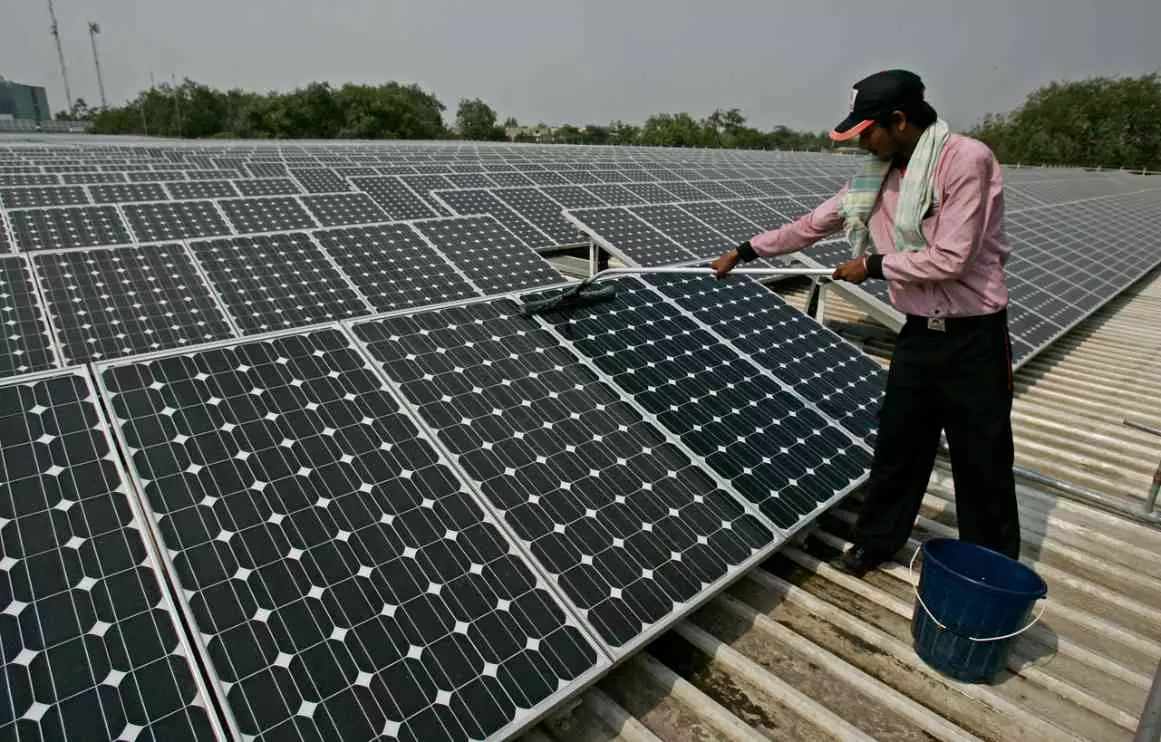
The disruption in India’s supply chains due to China's protectionist policies has slowed domestic manufacturing, threatening India's ambitious goal of adding 500 gigawatts of clean energy to the national grid and installing rooftop solar panels in 27 million homes by 2030. Photo: iStock
India’s solar ambitions face headwinds as China, US shift policies
India’s dream to become a global clean energy powerhouse is facing mounting challenges as China and the US are adopting protectionist and adversarial policies

Global rivals, China and the United States have been playing an important role in the growth of the Indian solar industry. But, unfortunately, in recent months both countries have adopted policies that have jeopardised this cooperation and affected India’s ambition to become a major social energy hub.
China, currently the world’s clean energy juggernaut, increasingly sees India as a future rival, and has the banned exports of ‘equipment and machinery’ that India used to buy for its solar panel and electric vehicle industries.
American President Donald Trump has added to India’s misery on this front. Trump, who is against the solar industry at home, has announced a series of restrictions to curb its growth. He has also imposed a 50 per cent tariff on Indian exports to the US, making it impossible for Indian goods to be sold there. These decisions have seriously challenged India’s ambitious journey to become a major solar energy hub.
Sourcing from China
In the beginning, India bought most of its solar panels and electric vehicles from China. This began to change when the government started to offer attractive incentives to encourage Indian manufacturers to develop them at home.
The Indian domestic economy showed growth as domestic demand started rising and exports to other countries expanded. Several countries, notably the United States seeking alternatives to China for its solar energy needs, found India as a promising and strategic partner in the clean energy sector.
Also read: Andhra Pradesh leads solar manufacturing push, Jupiter plans Rs 2,700 cr facility
More than 90 per cent of the polysilicon are in China’s control that India needs for manufacturing their solar panels. India also imports most of the silicon wafers from China for the cells it produces here for manufacturing electric vehicles.
Since China has banned the export of these items to India, manufacturing operations in these Indian companies have slowed down.
Trump opposes solar
Meanwhile, in the USA, Trump has been totally opposed to the renewable industry prompting his critics to accuse him of being hell-bent on destroying it.
“We will not approve wind or farmers destroying solar,” Trump said. “The days of stupidity are over in the USA,” he posted on Truth Social a few days back.
Trump is strongly opposed to solar energy because believes solar plants take up excessive land and end up affecting farmers. The Trump administration has therefore tightened federal permitting processes for renewal energy projects. The US President also blames the rise in electricity prices across the US on renewables.
After Trump's comments on solar, renewable companies increasingly fear that their projects will no longer receive permits that were once routinely granted.
According to American media reports, prices have risen on the country’s largest grid, PJM Interconnection, due to the rapidly growing demand from data centres and other industries facing a tight power supply, as resources such as coal are retired.
India's ambitious plan
Trump’s decision to end the renewable companies and his 50 per cent tariff on Indian exports have seriously affected Indian solar panel manufacturers, who would earlier sell them in the American market.
Also read: India added a record renewable energy capacity of about 30 GW in 2024
Last year, India produced 80 gigawatts of solar modules. The modules convert sunlight into electricity and a single gigawatt of installed renewable energy capacity could provide electricity to 100,000 households for an hour.
India has set an ambitious goal to integrate 500 gigawatts of clean energy into its national grid and install rooftop solar panels across 27 million households by 2030.
India’s wind and solar capacity doubled in the last five years and it is now the world’s third largest generator of electricity from renewable sources after China and the United States.
Challenges for India
India wants to manufacture wind, solar, and EV factories in the country as part of its strategy to build an independent supply chain away from China, in case it fails to plug into the existing supply chain of China for its manufacturing base.
Prime Minister Narendra Modi is an ardent supporter of transforming India into a clean energy hub. In fact, the government has restricted foreign companies in this sector unless they are willing to invest in India and set up their manufacturing units in the country.
Meanwhile, it has been encouraging domestic companies to produce these panels and batteries by offering attractive incentives. However, these companies are facing a challenge unable to find reliable and regular supplies for essential items required for their manufacturing beyond China.
Additionally, with nearly half of India’s solar modules exported to the US, the imposition of Trump’s tariffs is seriously posing a major challenge for the industry.
Modi-Xi meeting raises hope
The meeting between the Indian Prime Minister and the Chinese President on the sidelines of the Shanghai Cooperation Organisation summit in China has raised the hopes of the renewables industry.
Both Modi and Xi Jinping stressed on working together for each other's countries' growth and development. This can probably lead to the easing of restrictions that are currently in place. It is expected that both countries smarting under Trump’s whimsical policies will enter into a cooperative engagement to tide over the crisis.
It now remains to be seen whether the expected Chinese investment and policy will enable India to integrate into China's supply chain and bolster its own manufacturing base.

